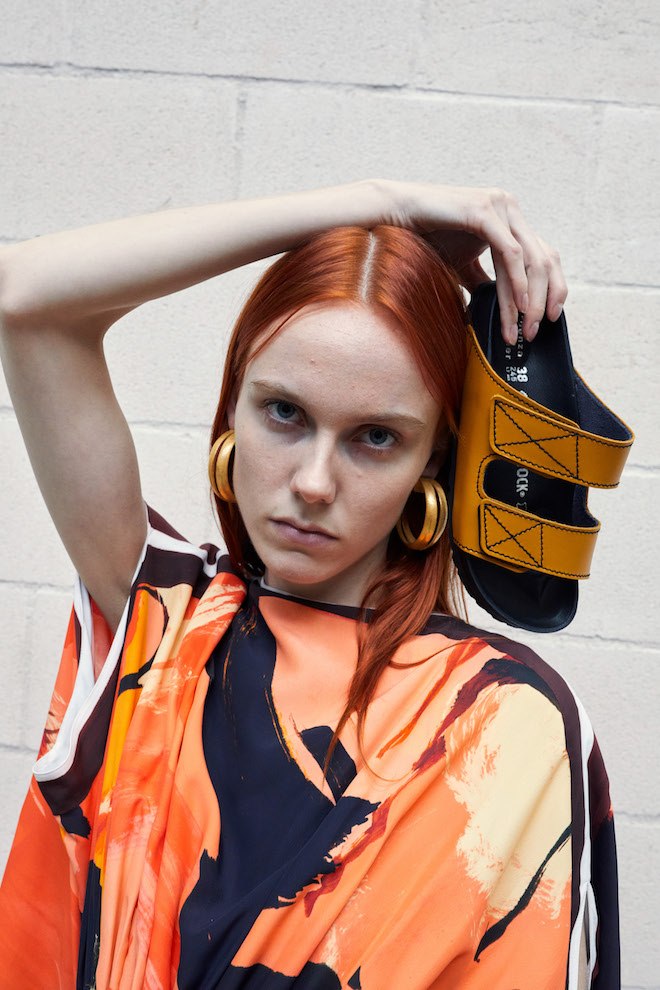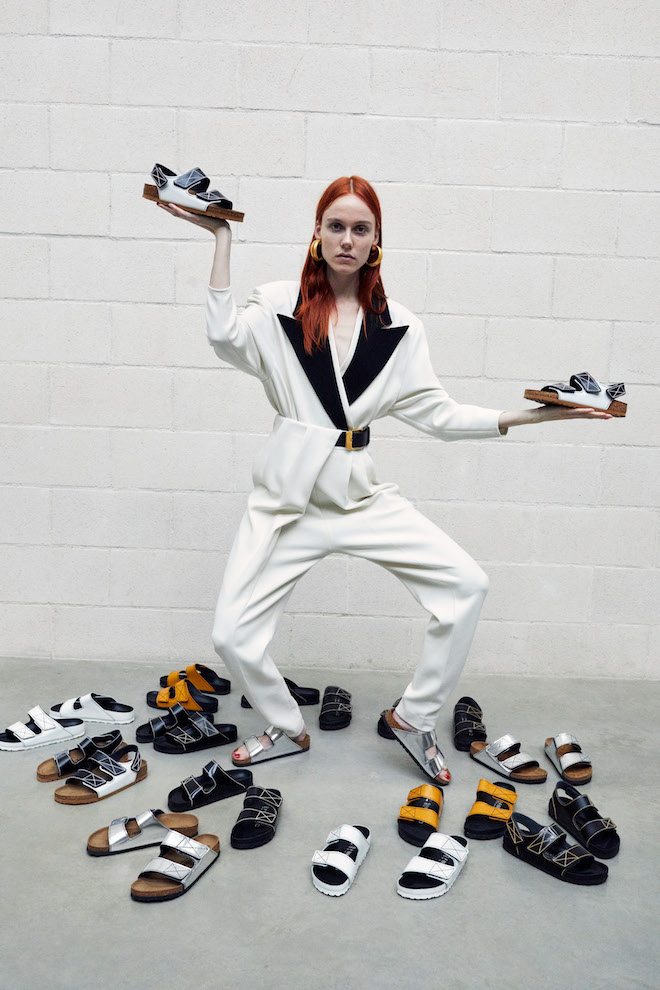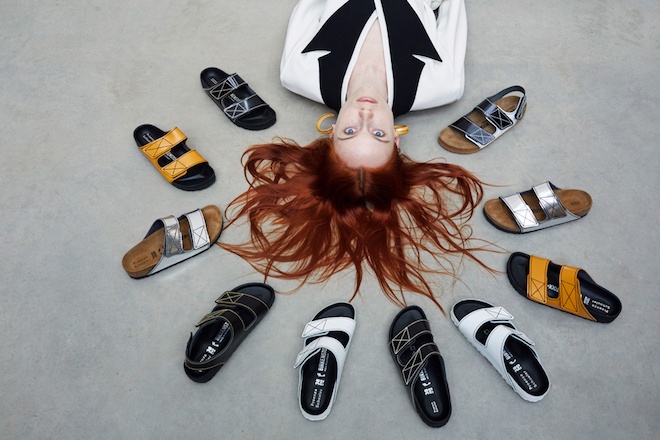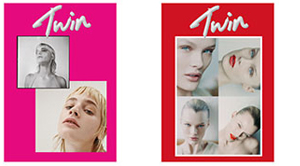Collaboration – never has the creative industry needed to explore the potential of partnerships in such a laterally minded way. As the world goes through what has been dubbed a collective trauma, connected and meaningful interactions have been formulating as the experience of the global crisis solidifies groups – memories that will be shared in the future.
Partnerships are becoming more reasonable, more cultivating, more open to input and experience.We see the term maker traversing a spectrum of craft, limited not to certain adages and opening itself to dialogues with how others are coping and creating. On the crest of the pandemic breaking on western shores, Proenza Schouler collaborated with Birkenstock. Shot by Juergen Teller, the collaboration evokes an impression of the importance to look at function within form once more: of what people want, what people need.
Twin spoke to Jack McCollough and Lazaro Hernandez of Proenza Schouler about this cross pollination of ideas and why we need collaborations now more than ever.

How did this partnership come about?
J&L: The collaboration happened quite organically. A friend of ours who was working on a project with Birkenstock mentioned to them that we were fans of the brand, and that perhaps we should all meet together to discuss a potential collaboration. We met, and the rest is history.
What was the attraction to either design house?
J&L: Birkenstocks have always had a special place in our lives and are one of the few things that the two of us have in common from our separate and completely different childhood experiences.
Lazaro: I grew up in Miami, so the ocean was an important part of my life. Spending your free time on the sand and on boats was what one did as a kid. Birkenstocks were what my friends and I always wore because they were easy, comfortable, and had a kind of counterculture nostalgia associated with them that was very much in the air during those days. I remember wearing them to my first day of college at the University of Miami and not thinking twice about how appropriate that would be. It was simply part of the culture down in the tropics. When I moved to NY, I of course took my Birkenstocks with me and actually still have those exact pair in my closet. They are one of the few things I still have in my possession from those early days before Proenza Schouler.

Jack: I grew up in Tokyo but moved to New Jersey as a child with my family. Growing up in the 90’s and being the free spirited and independent kid that I was, I ended up leaving home at a young age and traveling around the country with the Grateful Dead. It was during those years that Birkenstocks really became a staple of my everyday life. On tour, that was the de facto uniform. They became a kind of symbol of a by gone era that the kids around me were glorifying in a way, and trying to relive on our own. Of course, it was a different time altogether, but Birkenstocks somehow connected the past with the present. I moved to San Francisco after I eventually finished high school, then ended up at an arts boarding school in Massachusetts, before ending up in NY and starting at Parsons. Birkenstock were a part of my entire journey into adulthood and to this day are still a mainstay of my life.
Would you say this is a meeting of likeminded creatives or actually an opposites-attract partnership?
J&L: We love the idea of two New York designers who have a brand firmly planted in the eco system of NY fashion collaborating with a historic German shoemaker. The cross pollinating of cultures and ideas and work styles feels totally pertinent to the world of today.

Why do we need collaboration in the fashion world now more than ever?
Collaborations can be great if they feel organic and natural. We actually don’t do many of them as we like to focus on the work we already do in-house. We have pretty clear ideas of what we like and what we don’t, and sometimes with too many cooks in the kitchen the process can get difficult. There are already two of us, so adding more people into the mix can sometimes get complicated. On the other hand, if the collaborator does something iconic that we feel makes sense for us and our woman, and we have a very clear idea of what we would like to do for it, then of course it is a great thing to do. It opens up your brand to people who wouldn’t normally interact with it and vice versa. It can be an incredibly interesting thing to do on many levels and we think the one-off nature of the project usually makes it exciting and desirable for people.
It’s important to open up your studio to new voices, new ideas, new people, in an effort to push the boundaries of what is possible in-house. We could have done our own version of a Birkenstock sandal with Proenza Schouler shoes, but it would never be a real Birkenstock. Authenticity is something we care deeply about and if we wanted to create something in the world of Birkenstock, who better to do it with than the masters of that kind of shoe: Birkenstock.


 PREVIOUS
PREVIOUS

 Twitter
Twitter
 Tumblr
Tumblr
 YouTube
YouTube
 Facebook
Facebook
 Instagram
Instagram
